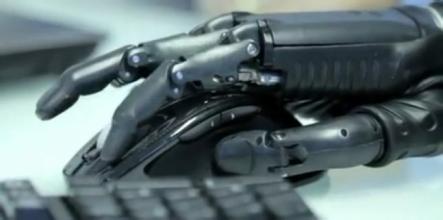Release date: 2014-05-07

The US simulation human brain has developed a "neural mesh" circuit board that runs 9000 times faster than a normal computer.
The human brain is actually an efficient and energy-saving organ. With slow and messy neurons, you can deal with some of the most difficult problems for the world's most powerful supercomputers: understanding language, abstract thinking, and controlling actions. . And this small brain than the shoe box, only uses less energy than the home light bulb.
This kind of efficiency and energy saving of the human brain gives scientists inspiration on the one hand, and on the other hand, it also attracts scientists to further explore their secret desires. The chip or system that simulates the human brain satisfies these two points, thus attracting countless heroes to compete.
According to a recent report by the physicist organization network, scientists at Stanford University in the United States have developed microchips that are faster and more energy efficient. They run at 9000 times faster than traditional personal computers (PCs) and consume much less energy. Scientists say the latest research is expected to boost the development of robotics and computing technology and further enhance human understanding of their brains. For example, a chip that can operate like a human brain quickly and efficiently is expected to give the mechanical prosthesis the complexity and responsiveness of a healthy limb. Related research was published in the International Journal of the Institute of Electrical and Electronics Engineers.
"Neural Grid" or can manipulate prosthetic limbs
The "Neurogrid" circuit board developed by the research team of bioengineering at Stanford University, Quabena Porkhan, consists of 16 special "Neurocore" chips, each with more than one chip. 65,536 "silicon neurons" that can be programmed with 80 parameters to simulate different types of neurons. Together, these 16 chips can simulate 1 million neurons and billions of synaptic connections. It simulates the human brain's 1 second activity and takes only 1 second. The "neural mesh" is about the size of an iPad and consumes 5 watts, which is equivalent to a mobile phone charger, and its ability to simulate neurons and synapses is orders of magnitude more than other brain analog devices.
The high-speed operation and low energy consumption of the Neural Network make it a powerful tool for studying the human brain. In addition to understanding the normal activities of the brain, it can also study brain diseases such as autism and schizophrenia. It is difficult to simulate with existing conventional techniques. In view of this, the National Institutes of Health (NIH) funded the Million Neuron Model.
Now, Polkhan has embarked on the next step of research - reducing costs and building compiled software. Compilation software can be used by engineers and computer experts who do not have neuroscience knowledge to solve problems, for example, using a "neural mesh" to control humanoid robots. The Polkhan research team is developing prosthetic limbs that can be controlled by a similar "neural core" chip for people with residual disease.
A variety of human brain simulation devices have their own
Polkhan pointed out that in addition to his "neural grid" project, there are a number of large-scale neuromorphological studies, which are in full swing. These include the “human brain plan†in Europe and the “brain plan†in the United States. The "Human Brain Project" aims to simulate the working principle of the human brain with supercomputers; the main purpose of the "brain plan" is to develop new tools that can read the activities of millions of nerve cells in the brain and write patterns of these activities.
In addition, there is IBM's "Neuromorphic Adaptive Plastic Miniaturized Electronic System (SyNAPSE)" project. The SyNAPSE chip is a silicon chip whose architecture is inspired by the function, power saving and compactness of the human brain. The latest SyNAPSE chip integrates 256 digital neurons, each with 1024 synaptic loops, and IBM hopes to increase the number of neurons in the system.
The goal of the BrainScales program, led by the Kirchhoff Institute of Physics at the University of Heidelberg, Germany, is to develop logic chips to simulate the behavior of neurons and synapses. The "High Input Number Simulated Neural Network (HICANN)" they developed can mimic the interaction between drugs. Currently, the HICANN system can simulate the activity of 512 neurons, each with 224 bursts.
These studies have their own merits, and different techniques are used, for example, to allow each hardware circuit to simulate a single neural unit (single synapse) or several neural units (by activating the hardware circuit twice to simulate the effects of two active synapses) Etc. This leads to different systems with different functions and different performances.
Polk also created a unit of measure to calculate the cost of all these systems, including chip size, how many neurons it can simulate, and energy consumption. The results show that the "neural grid" is the most cost-effective way to simulate neurons. The original intention of Polkhan - to create a system that people can afford and can be widely used in various research fields.
Reducing costs is a priority
Still, there is still a lot of work to do, and the most important thing is to reduce costs. Currently, the cost per chip on the "neural grid" board is about $40,000. Polkman believes that using modern manufacturing processes and mass-producing such chips, he can reduce the cost of each "nerve core" by a factor of 100; cheaper hardware and compiler software can reduce the cost of chip configuration, such a Come, you can greatly reduce the cost of the "neural grid", giving it the opportunity to make a big impact in many areas.
For example, a chip that runs at high speed like a human brain can give prosthetic limbs the complexity and speed of a healthy limb. Bohrham foresees that in the future, a chip similar to the "nerve core" can be implanted in the brains of disabled people, explaining human movements and translating them into commands and directing prosthetic limbs.
Currently, in the laboratory of Polkhan, the “neural grid†is controlling a small prosthetic to execute motion commands in real time. It seems that this small prosthetic is not eye-catching, but its operating levers and joints are very simple, which is likely to be the prototype of the future prosthetic limbs.
Of course, all of these neuromorphic systems cannot be compared to the complexity and efficiency of the human brain. Polkner stressed that although the "neural grid" is about 100,000 times more energy efficient than a personal computer that simulates 1 million neurons, it still cannot match our brain.
“The number of neurons in the human brain is 80,000 times that of the 'neural grid,†and the energy consumption is only three times. The ultimate challenge for engineers in the field of neuromorphology is that scale and energy efficiency are not the same. Mistakes, that is, to achieve better configurability and scale while achieving energy efficiency in the human brain."
Source: China Science and Technology Network - Technology Daily
Fruit Single Packed Sweet Corn
What are the benefits of eating a vegetarian diet on a regular basis?
1. People who eat vegetarian food regularly will live longer than those who eat meat regularly, as Indian tribesmen live longer because of their regular vegetarian diet and many monks live longer because of their regular vegetarian diet. The fat content of sweet corn is 2 grams of fat per 100 grams, making it a low-fat product.
A single cob pack of sweet corn from Jilin Province Agricultural Sister-in-law Food Co., Ltd. is at least 220g and will provide you with at least 6.38g of protein and 4.4g of fat.
2. Corn as a vegetarian food is lower in calories than other foods of the same quality, and its fat content is almost non-existent. It provides the body with the nutrients and vitamins it needs and has no energy stores.
3. Reduces cholesterol levels. Vegetarians have less cholesterol in their blood than meat eaters. If cholesterol levels in the blood are too high, it often causes blood vessels to become clogged.
4. It reduces the burden on the kidneys. Once meat eaters eat meat containing animal blood, the burden on the kidneys is even heavier".



If you have any questions, please contact us directly. If you have any questions, please email us directly.
Sweet Corn Fresh,Delectable Sweet Corn,Sweet Corn Healthy,Baked Sweet Corn
Jilin Province Argricultural Sister-in-law Food Co., Ltd. , https://www.nongsaocorn.com